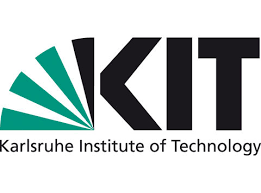Karlsruhe Institute of Technology: Blueprint for sustainable mobility development
The Franco-German joint project SuMo-Rhine, coordinated by the Karlsruhe Institute of Technology (KIT), concluded with a colloquium at the University of Freiburg on November 17, 2021. Nine project partners and more than 20 associated partners have worked in the past three years to improve the basis for sustainable mobility on the Upper Rhine. The results, namely the “Municipal Information System for Sustainable Mobility”, could also point the way for other regions.
What do municipalities and regions need in order to sustainably develop the mobility sector? This question has now been answered using the example of the dynamic, trinational metropolitan region of the Upper Rhine. The KIT with its Franco-German Institute for Environmental Research (DFIU) and its Institute for Economics (ECON), the Strasbourg École d’architecture (ENSAS), the Laboratoire image, ville, environnement (LIVE-UNISTRA) of the University of Strasbourg, the Center national de la recherche scientifique (CNRS), the University of Haute-Alsace, the Professorship for Remote Sensing and Landscape Information Systems (FeLis) at the University of Freiburg, the University of Koblenz-Landau, the city of Lörrach and other institutions. In the joint project “SuMo-Rhine – Promotion of Sustainable Mobility in the Upper Rhine Region”, they developed, among other things, the data-driven municipal information system for sustainable mobility (KINaMo). KINaMo records and evaluates municipal mobility offers from 61 points of view (indicators). At the same time, it shows how the offers can be made more sustainable – that is, safer, more economical, more environmentally friendly and more needs-based.
With the support of the online spatial data service HERE, municipalities and the general public were able to make the necessary empirical data – for example on timetables, traffic infrastructures, noise and pollution or accident statistics – available continuously, automatically and in a comparable manner for the first time. “With SuMo-Rhine, the Upper Rhine region could become a blueprint for the sustainable development of mobility in other European border regions,” says Professor Wolf Fichtner, head of the Franco-German Institute for Environmental Research at KIT and head of the project that ended after three years.
In addition to the development of KINaMo, empirical analyzes were carried out. These provide information about political agendas and challenges in the Upper Rhine region. It became clear that transport policy measures at the municipal level focus on the shift in transport demand to more environmentally friendly means of transport. Avoiding traffic, on the other hand, only plays a subordinate role. The choice of means of transport when commuting to work, the reasons for this choice and, depending on the situation, the traffic-related perception of the corona crisis were also examined. Last but not least, these analyzes enable a comparison between Germany, France and Switzerland, the three countries in the Upper Rhine region.
Local and cross-border applications
In the second central field of activity of the project, the new indicator system was tested and optimized in real contexts. One setting was the southern Baden town of Lörrach, which faces particular mobility challenges due to its valley location at the gates of Basel. When developing KINaMo, urban practitioners brought the local community perspective right from the start.
Using the example of the city of Strasbourg, however, urban development projects were evaluated – with the help of a model based on the indicator system. The researchers developed two different sustainable mobility scenarios for the Strasbourg-Eurometropolis municipal association in order to test the value of the indicator system for assessing future plans. In the “SuMo Atlas” sub-project, a mapping was created, also on the basis of the indicator system, which shows the current state of mobility on the Upper Rhine.
As a concise project of cross-border mobility, a tram line that went into operation in 2017 was finally analyzed, which connects Basel in Switzerland and the French community of St. Louis, around five kilometers away. “In the Upper Rhine region, cross-border mobility is not a rare phenomenon and must not be a barrier to sustainable mobility concepts,” says Nora Baumgartner (DFIU), scientific coordinator of the project. “In border regions in particular, synergies should be raised, potential used and joint learning encouraged in order to reduce the environmental impact.”

